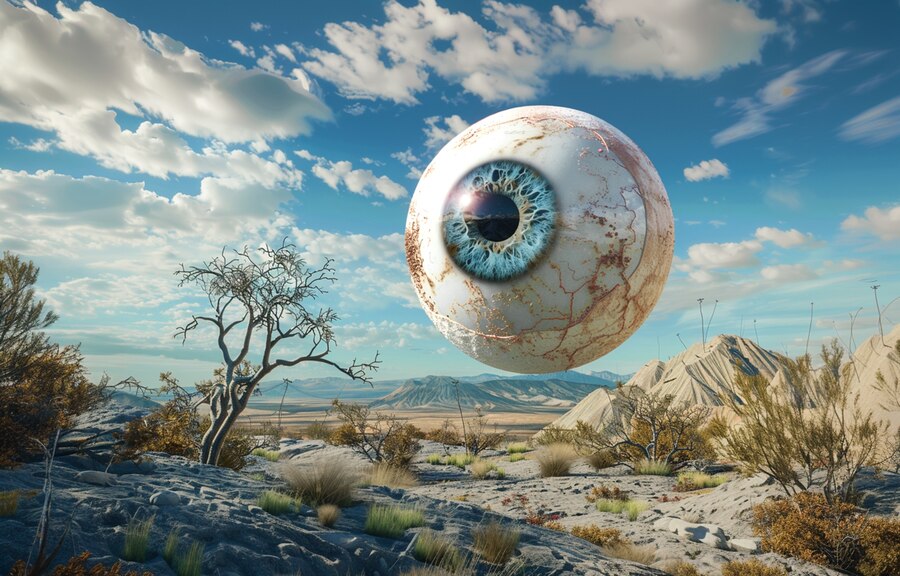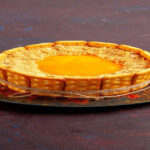In the realm of digital art and photography, techniques that alter perception and add depth to visuals are constantly evolving. One such intriguing method is the use of spherical distortion, a technique that warps an image as though it were viewed through a spherical lens. This effect can add a unique, artistic touch to visuals, transforming ordinary scenes into immersive, otherworldly experiences. The term “MidJourney Spherical Distortion” refers to this technique as applied in various creative processes, offering a fresh perspective that captivates viewers.
Introduction to Spherical Distortion
Spherical distortion is a visual effect that bends and twists an image as if seen through a spherical lens. This distortion can be subtle or dramatic, creating a wide range of artistic possibilities. By manipulating the perception of depth and space, spherical distortion can make images appear three-dimensional, giving them a sense of immersion and surrealism.
Historical Context of Spherical Distortion
The concept of altering images to create a sense of depth is not new. Artists and photographers have long experimented with various lenses and techniques to achieve unique visual effects. The fisheye lens, for example, is a well-known tool that produces a similar kind of distortion. However, the digital age has brought new tools and software that allow for more precise and customizable spherical distortions, expanding the creative potential of this technique.
The Science Behind Spherical Distortion
Understanding the science behind spherical distortion involves a basic grasp of optics and image processing. When light passes through a spherical lens, it bends in a way that distorts the image. This bending effect, known as refraction, causes straight lines to curve and objects to appear stretched or compressed, depending on their position relative to the lens.
Optical Principles
In traditional photography, lenses with spherical elements create this distortion naturally. In digital art, software algorithms mimic these optical principles to achieve similar effects. By applying mathematical transformations to the pixels of an image, digital artists can recreate the bending and warping seen in spherical lenses, but with much greater control over the final outcome.
Computational Techniques
Modern image processing software, such as Adobe Photoshop, GIMP, and specialized plugins, offer tools to apply spherical distortion to digital images. These tools use algorithms to adjust the pixel positions based on mathematical models of spherical lenses. Artists can fine-tune parameters such as the radius of the sphere, the strength of the distortion, and the focal point to achieve the desired effect.
MidJourney Spherical Distortion: A Creative Tool
The term “MidJourney Spherical Distortion” refers to the application of this technique in various stages of the creative process. Whether used in the initial concept phase, during the actual creation of the artwork, or in the final editing and polishing stages, spherical distortion offers a way to infuse images with a distinctive and captivating look.
Initial Concept Phase
In the initial concept phase, spherical distortion can be used to brainstorm and explore different visual ideas. By applying the effect to rough sketches or preliminary photos, artists can quickly see how the distortion changes the perception of their subjects. This can inspire new compositions and visual narratives that might not have been apparent with traditional perspectives.
Creation Phase
During the creation phase, spherical distortion becomes a powerful tool for crafting the final artwork. Digital artists can apply the effect selectively, warping certain parts of the image while leaving others untouched. This selective application can draw attention to specific elements, create a sense of movement, or add a layer of complexity to the visual story.
Final Editing Phase
In the final editing phase, spherical distortion can be used to enhance and refine the artwork. By tweaking the distortion parameters, artists can achieve the perfect balance between realism and surrealism. The final touches might include adjusting colors, contrasts, and lighting to complement the distorted elements, creating a cohesive and visually striking piece.
Applications of MidJourney Spherical Distortion
MidJourney Spherical Distortion is not limited to a single genre or style; it can be applied across various fields of digital art and photography. Its versatility makes it a valuable tool for artists seeking to push the boundaries of traditional visuals.
Digital Art
In digital art, spherical distortion can be used to create fantastical landscapes, abstract compositions, and imaginative portraits. Artists can experiment with different levels of distortion to evoke emotions, convey themes, and invite viewers to interpret the artwork in multiple ways.
Photography
Photographers can use spherical distortion to add a creative twist to their images. Whether capturing urban scenes, nature, or portraits, the effect can transform ordinary photographs into extraordinary works of art. For example, a cityscape viewed through a spherical distortion might appear as a futuristic metropolis, while a portrait might take on an ethereal quality.
Graphic Design
Graphic designers can incorporate spherical distortion into their projects to create eye-catching visuals for advertisements, websites, and multimedia presentations. The unique look of the distortion can help brands stand out and make a memorable impression on their audience.
Film and Animation
In film and animation, spherical distortion can be used to create special effects, enhance storytelling, and build immersive worlds. Animators can use the technique to simulate the perspective of characters, create dynamic transitions, or add a surreal atmosphere to scenes.
Techniques for Creating Spherical Distortion
Creating spherical distortion requires a combination of artistic vision and technical skill. Several techniques and tools can help artists achieve the desired effect.
Using Software Tools
Software tools like Adobe Photoshop and GIMP offer built-in filters and plugins that simplify the process of applying spherical distortion. These tools allow artists to adjust parameters such as the radius, intensity, and focal point of the distortion. Tutorials and online resources can provide guidance on how to use these tools effectively.
Custom Algorithms
For those with programming skills, custom algorithms can be written to achieve specific types of spherical distortion. Using programming languages like Python and libraries like OpenCV, artists can create bespoke distortion effects tailored to their artistic vision. This approach offers the highest level of customization but requires a solid understanding of both programming and image processing.
Combining Techniques
Often, the best results are achieved by combining multiple techniques. Artists might start with a basic distortion filter in a software tool and then refine the effect with custom algorithms or manual adjustments. This hybrid approach allows for greater control and precision in achieving the desired look.
Artistic Considerations
While the technical aspects of spherical distortion are important, artistic considerations play a crucial role in the success of the final piece. Understanding how to balance the effect with other elements of the composition is key to creating visually compelling artwork.
Composition and Balance
Spherical distortion alters the composition of an image by bending lines and shapes. Artists must consider how these changes affect the overall balance of the piece. Careful placement of the distorted elements can create a harmonious and dynamic composition that draws the viewer’s eye and enhances the visual narrative.
Color and Lighting
Color and lighting are essential components of any artwork. When applying spherical distortion, artists should consider how the effect interacts with these elements. Adjusting colors and lighting to complement the distortion can create a more cohesive and impactful visual experience.
Viewer Perception
Understanding how viewers perceive and interpret distorted images is crucial for effective storytelling. Spherical distortion can evoke a range of emotions and reactions, from curiosity and wonder to disorientation and unease. Artists should be mindful of the intended message and how the distortion supports or enhances that message.
Case Studies and Examples
Examining case studies and examples of MidJourney Spherical Distortion in action can provide inspiration and insight into the creative process.
Fantastical Landscapes
In digital art, spherical distortion is often used to create fantastical landscapes that defy the laws of physics. Artists can warp mountains, rivers, and skies to create surreal and dreamlike environments. These landscapes invite viewers to explore and lose themselves in the otherworldly scenes.
Abstract Compositions
Abstract compositions benefit greatly from spherical distortion. By bending and twisting shapes and colors, artists can create dynamic and fluid visuals that challenge traditional notions of form and structure. These compositions often evoke a sense of movement and energy, captivating viewers with their complexity and beauty.
Portrait Photography
In portrait photography, spherical distortion can add a unique and artistic touch to the depiction of the human face. Subtle distortions can enhance features, create a sense of depth, or add an ethereal quality to the portrait. More dramatic distortions can transform the subject into a surreal and otherworldly character.
Urban and Nature Photography
Both urban and nature photography can be enhanced with spherical distortion. In urban photography, the effect can turn cityscapes into futuristic metropolises, emphasizing the scale and geometry of buildings. In nature photography, spherical distortion can create immersive landscapes that draw viewers into the scene, highlighting the beauty and majesty of the natural world.
Conclusion
MidJourney Spherical Distortion is a powerful and versatile technique that offers endless creative possibilities for digital artists and photographers. By bending and warping images as if viewed through a spherical lens, this effect can transform ordinary visuals into extraordinary works of art. Whether used subtly to enhance depth and perspective or dramatically to create surreal and fantastical scenes, spherical distortion captivates viewers and invites them to see the world in a new and exciting way. As digital art and photography continue to evolve, techniques like spherical distortion will play an increasingly important role in pushing the boundaries of creativity. Artists who master this technique can offer fresh perspectives and unique visual experiences that stand out in a crowded digital landscape.







